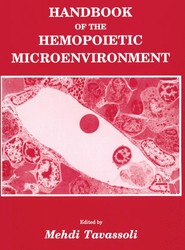(To see other currencies, click on price)
MORE ABOUT THIS BOOK
Main description:
Developmental cancer products (oncodevelopmental markers, ODM) not only serve as diagnostic and prognostic indicators but also may be used to study the nature of the carcinogenic process and the biology of tumors. For many years oncologists have searched for markers of cancer cells that would permit unequivocal recognition of cancer in contrast to noncancerous tissue. The earliest and still most widely used method of identification of cancer tissue or cells is the structural resemblance of cancer tissue to fetal or immature tissue. Pathologists not only recognize cancer by its morphologic similarity to fetal tissues, but also in many instances can relate the behavior of a given tumor to the degree of tissue differentiation. Thus, poorly differentiated tumors that resemble fetal tissue generally grow more rapidly and metastasize earlier than do well-differentiated tumors that more closely resemble adult tissue. In recent years the commonality of fetal and cancer tissue has been extended to products of tumor cells that, can be analyzed by biochemical, immunological, or physiological techniques. Increas ingly, products of cancer cells similar to fetal products are being identified and studied. These products range from cell-surface markers (fetal or differentiation antigens), placental proteins, hormones, and isoenzymes to a multitude of products, such as carcinoembryonic antigen (CEA), alphafetoprotein (AFP), lymphocyte markers, and nucleic acids, such as tRNA, that are produced in small amounts by v vi PREFACE continually differentiating cells in the adult but in much greater amounts by tumors.
Contents:
1 Teratocarcinoma.- 1. Introduction.- 2. Spontaneous Teratocarcinomas of Mice.- 3. Embryoid Bodies.- 3.1. Structure of Embryoid Bodies.- 3.2. Development of Embryoid Bodies.- 3.3. Formation of Embryoid Bodies in Vitro.- 3.4. Fate of Embryoid bodies on Transplantation.- 3.5. Significance of Embryoid Bodies.- 4. Embryonal Carcinoma in Vivo.- 4.1. In Vitro Manipulation of Embryonal Carcinoma.- 4.2. Biochemistry of Embryonal Carcinoma.- 4.3. Membrane Antigens of Embryonal Carcinoma.- 4.4. Growth in Defined Media.- 4.5. Modulation of Embryonal Carcinoma.- 4.6. Ultrastructure of Embryonal Carcinoma.- 4.7. Virus Embryonal Carcinoma Cell Interactions.- 5. Yolk Sac Carcinoma.- 6. Origin of Teratocarcinoma.- 6.1. Origin of Spontaneous Testicular Teratocarcinomas.- 6.2. Origin of Ovarian Teratocarcinomas.- 6.3. Teratocarcinomas from Transplanted Eggs.- 6.4. Origin of Teratomas after Fetectomy.- 7. Summary.- References.- 2 Mouse Lymphocyte Differentiation Markers.- 1. Introduction.- 2. The Natural History of the Lymphocyte.- 3. Production and Testing of Alloantisera.- 4. Lymphocyte Alloantigens.- 4.1. Thy-1 (theta).- 4.2. Thymus Leukemia (TL) Antigens.- 4.3. Lyt-1, Lyt-2, and Lyt-3.- 4.4. Ala-1, Ly-6, and Ly-8.- 4.5. Lyb-3.- 5. Applications.- 5.1. Elucidation of a Scheme of T-Lymphocyte Differentiation.- 5.2. Genetics of the Biosynthesis of a Cell Membrane Component, Thy-1.- 5.3. In Vitro Studies of Hormone-Induced Differentiation.- 6. Conclusions.- References.- 3 Monoclonal Immunoglobulins As Biomarkers of Cancer.- 1. Introduction.- 2. Classification and Characterization of Immunoglobulins.- 3. Monoclonal Immunoglobulins and the Diagnosis of Cancer.- 3.1. Detection of Monoclonal Immunoglobulins.- 3.2. Identification of Monoclonal Immunoglobulins.- 3.3. Significance of Monoclonal Immunoglobulins.- 4. Monoclonal Immunoglobulins and Clinical Manifestations of Cancer.- 5.Monoclonal Immunoglobulins and the Treatment of Cancer.- 6. Monoclonal Immunoglobulin Alterations and the Pathogenesis of Cancer.- References.- 4 Markers in Human Lymphoid Tumors.- 1. Introduction.- 2. Phenotypic Markers of Normal Mononuclear Cells.- 2.1. Receptors for Sheep Erythrocytes (ER).- 2.2. Lymphocyte Alloantigens.- 2.3. Surface Immunoglobulin (SIg).- 2.4. Cytoplasmic Immunoglobulin (CIg).- 2.5. Complement Receptors (C3R).- 2.6. Fc Receptors.- 2.7. Terminal Deoxynucleotidyl Transferase (TdT).- 3. Acute Lymphoblastic Leukemia (ALL) and Lymphoblastic Lymphoma.- 4. Non-Hodgkin's Lymphoma.- 4.1. Nodular Lymphomas.- 4.2. Diffuse Well-Differentiated Lymphoma (DWDL) and Chronic Lymphocytic Leukemia (CLL).- 4.3. Diffuse Poorly Differentiated Lymphoma (DPDL).- 4.4. Large-Cell Lymphomas.- 4.5. Undifferentiated Tumor-Burkitt's Type.- 5. Hodgkin's Lymphoma.- 6. Parallels between Lymphoid Malignancies and Normal Human Lymphocyte Maturation.- 7. Conclusion.- References.- 5 Oncofetal Transplantation Antigens.- 1. Introduction.- 2. Experimental Approaches.- 2.1. Tumor Immunity Following Fetal Cell Immunization.- 2.2. Abrogation of Tumor Induction.- 2.3. In Vitro Evidence of Transplantation Immunity to OFA.- 2.4. Fetal Cell Suppression Following Tumor Immunization.- 2.5. Tumor Immunity Induced by Pregnancy.- 2.6 Relationship of OFA to TATA.- 3. Quantitative Aspects of OFA Transplantation Immunity.- 4. Physicochemical Studies of OFA and TATA, Relative to H-2.- 5. Summary.- References.- 6 Antigens and the Major Histocompatibility Complex.- 1. Introduction.- 2. Overview of Genetic Elements of the 17th Chromosome.- 2.1. The T/t Complex.- 2.2. H-2 and Tla Genes.- 3. H-2 Genes and Immune Function.- 3.1. H-2K, H-2D, and H-2L Genes.- 3.2. Role of H-2K, D, and L as Target Molecules for Alloreactive Cytotoxic T Cells.- 3.3. H-2K and D in H-2 Mutant Strains.- 3.4. Are Serological and T-Cell Antigenic Specificities Identical on H-2K or D Molecules?.- 3.5. Role of H-2K, D, and L in Controlling the Specificity of Cytotoxic T Cells in Syngeneic Systems.- 3.6. H-2I Region Genes.- 3.7. Qa Loci.- 4. Structure of H-2 Antigens.- 4.1. H-2K, D, and L Antigens.- 4.2. Ia Antigens.- 4.3. Qa and TL Antigens.- 5. T-Cell Receptors and Antigen MHC Relationships with Respect to H-2 Restriction.- 5.1. T-Cell Receptors for Antigen.- 5.2. Molecular Models for Antigen-H-2 Relationships.- 5.3. Antigen-H-2 Relationships.- 5.4. Cytotoxic T-Cell Recognition of Tumor Cells.- 5.5. Cross Reactions between TATA and H-2.- 6. Conclusion.- References.- 7 Hormone-Secreting Tumors.- 1. Introduction.- 2. Documentation of Ectopic Hormones.- 3. Recognition of Paraendocrine Syndromes.- 4. Paraendocrine Syndromes Associated with Marked Metabolic Aberrations.- 4.1. ACTH.- 4.2. Hypercalcemia.- 4.3. Syndrome of Inappropriate Antidiuretic Hormone (SIADH) Secretion.- 4.4. hCG.- 4.5. VIP.- 4.6. Growth Hormone.- 4.7. Hypoglycemia.- 4.8. Other Paraendocrine Syndromes.- 5. Theory.- 6. Conclusion.- References.- 8 Enzymes and Isoenzymes in Cancer.- 1. Introduction.- 2. Enzyme Activities.- 2.1. Enzymes of Nucleic Acid Metabolism.- 2.2. Enzymes of Carbohydrate Metabolism.- 2.3. Enzymes Specific for Certain Tissues.- 3. Isozymes.- 3.1. Lactate Dehydrogenase.- 3.2. Pyruvate Kinase.- 3.3. Hexokinase.- 3.4. Aldolase.- 3.5. Alkaline Phosphatase.- 3.6. Alcohol Dehydrogenase.- 3.7. Branched-Chain Amino Acid Transferases.- 3.8. Creatine Kinase.- 3.9. 5?-Nucleotide Phosphodiesterase.- 3.10. Amylase.- 3.11. Galactosyltransferase.- 4. Serum Enzymes.- 5. Factors Affecting the Interpretation of Enzyme Activity and Isozyme Measurements.- 5.1. Extraction and Bound Enzymes.- 5.2. Assays.- 5.3. Electrophoresis and Staining Procedures.- 5.4. Tissue Heterogeneity.- 5.5. Enzyme turnover.- 6. Concluding Remarks.- References.- 9 Pregnancy Proteins as Tumor Markers.- 1. Introduction.- 2. Pregnancy-Specific Proteins.- 2.1. Placental Lactogen (hPL).- 2.2 Pregnancy-Specific Glycoprotein (SPI).- 2.3. Placental Protein Five (PP5).- 3. Pregnancy-Associated Proteins.- 3.1. Pregnancy-Associated ?-Glycoprotein (?2-PAG).- 4. Comment.- 4.1. Assessment of Tumor Markers.- 4.2. Future Prospects.- References.- 10 Alphafetoprotein.- 1. Introduction.- 2. Isolation.- 3. Characterization.- 4. Normal Development.- 5. Abnormal Development.- 6. Production in Cultured Hepatocytes.- 7. Liver Injury.- 8. Production by Tumors.- 9. Effect of Anti-AFP on Tumors.- 10. Hepatocarcinogenesis.- 11. Function of AFP.- 12. Final Comments.- 13. References.- 11 Carcinoembryonic Antigen A: Chemistry and Biology.- 1. Introduction.- 1.1. Definition.- 1.2. Immunoassays.- 2. Purification.- 2.1. PCA Method.- 2.2. Neutral-pH Methods.- 3. Crossreacting Antigens.- 4. Comparative Immunochemistry of CEA and CEA-Related Antigens.- 4.1. NH2-Terminal Sequences.- 4.2. Carbohydrate Linkage Analysis.- 5. Further Structural Studies on CEA.- References.- 12 Theoretical and Practical Consideration of the Utility of the Radioimmunoassay for Carcinoembryonic Antigen (CEA) in Clinical Medicine.- 1. Introduction.- 2. The Radioimmunoassay for CEA.- 3. The Radioimmunoassay for CEA in Clinical Medicine.- References.- 13 Antigens Associated with Human Solid Tumors.- 1. Introduction.- 2. Gastric Carcinoma.- 3. Colonic Carcinoma.- 4. Pancreatic Carcinoma.- 5. Bronchogenic Carcinoma.- 6. Breast Carcinoma.- 7. Ovarian Carcinoma.- 8. Cervical Carcinoma.- 9. Urinary Bladder Carcinoma.- 10. Melanoma.- 11. Brain.- 12. Miscellaneous.- 13. Concluding Discussion.- 14. Acknowledgments.- References.- 14 Surface Glycolipid and Glycoprotein Antigens.- 1. Introduction.- 2. Transformation-Dependent Changes in Cell Surface Carbohydrates.- 2.1. Changes in Glycosphingolipids.- 2.2. Changes in Glycoproteins.- 2.3. Cell Surface Carbohydrates and Regulation of Growth.- 3. Carbohydrate Antigens of the Cell Surface.- 3.1. Tumor-Associated Antigens.- 3.2. Glycosphingolipid Antigens in Normal and Tumor Cells.- 3.3. Glycoprotein Antigens in Normal and Tumor Cells.- 3.4. Blood Group Antigens and Their Modification in Tumors.- 4. Glycolipid and Glycoprotein Antigens in Development.- 5. Changes of Sialic Acid in Neoplastic Transformation and Its Role in Antigen Regulation.- 6. Serum Carbohydrates and Glycosol Transferases-Cancer Diagnostic Significance.- 6.1. Serum Carbohydrates.- 6.2. Serum Glycosyl Transferases.- 7. Summary and Prospects.- References.- 15 Lectin Interactions with Normal and Tumor Cells and the Affinity Purification of Tumor Cell Glycoproteins.- 1. Introduction.- 2. Lectins as Molecules.- 2.1. Purification Techniques.- 2.2. Lectin Specificities.- 3. Methods of Lectin Use.- 3.1. Cell Agglutination.- 3.2. Quantitative Labeling.- 3.3. Localization of Lectin-Binding Sites.- 3.4. Purification of Glycoproteins and Cells.- 4. Lectin Interactions with Normal and Tumor Cells.- 4.1. Differences in Cell Agglutination by Lectins.- 4.2. Quantitation of Lectin-Binding Sites.- 4.3. Distribution and Mobility of Lectin Receptors.- 4.4. Factors Affecting Lectin-Mediated Cell Agglutination.- 5. Purification of Tumor Cell Glyproteins by Lectin Affinity Chromatography.- 6. Final Comment.- References.- 16 Transfer RNA and Its By-Products as Tumor Markers.- 1. Introduction.- 2. The Complexity of tRNA Biosynthesis and Processing.- 3. The Functions of tRNA Modification-The Tyranny of Covalency.- 4. tRNA Methyltransferases in Tumor Tissue.- 5. The tRN AS of Tumor Tissue.- 6. Excretion of Elevated Levels of tRNA Breakdown Products by Cancer Patients.- 7. The Urinary Products Do Not Stem from Cell Death but Instead from High Turnover of tRNA in Tumor Tissue.- 8. Patterns of Excretion of Nucleic Acid Breakdown Products by Normal Subjects and Cancer Patients.- 9. The Range of Excretion Levels of Some Nucleosides Is Very Narrow in Normal Subjects and Widely Elevated in Cancer Patients.- 10. Thirty UV-Absorbing Nucleosides in Normal Urine are Detected and Quantitated by HPLC.- 11. The Level of Excretion of the Modified Nucleosides Returns Very Close to Normal Levels Very Soon after Effective Chemotherapy.- 12. Discussion.- References.- 17 Nonhistone Protein Antigens.- 1. Introduction.- 2. Nuclear Protein Antigens.- 2.1. Nuclear Antigens in Transformed Cells.- 2.2. Soluble Chromosomal Nonhistone Protein Antigens.- 3. Antibodies to Nuclear Components.- 3.1. Dehistonized Chromatin.- 3.2. Total Chromatin.- 3.3. Nuclear Membranes.- 3.4. Nucleoli.- 4. Nuclear Antigens and Cancer.- 5. Conclusions.- References.- 18 Fibronectin.- 1. Introduction.- 2. Chemical Properties of Fibronectin.- 3. Immunochemical Properties of Fibronectin.- 4. Cellular Origin of Fibronectin.- 5. Distribution of Fibronectin in Cultured Cells and Tissues.- 6. Binding of Fibronectin to Collagen, Fibrin, and Glycosaminoglycans.- 7. Fibronectin in Cell Attachment and Spreading.- 8. Fibronectin in Malignant Transformation.- 9. Concluding Marks.- References.- 19 Circulating Immune Complexes in Cancer.- 1. Introduction.- 2. Detection of Circulating Immune Complexes.- 2.1. Physical Separation of Immune Complexes.- 2.2. Interaction with Complement Components.- 2.3. Rheumatoid Factor Assays.- 2.4. Cell Binding Assays.- 3. Circulating Immune Complexes in Cancer.- 3.1. Breast Cancer.- 3.2. Melanoma.- 3.3. Lung Cancer.- 3.4. Gynecological Tumors.- 3.5. Gastrointestinal Tumors.- 3.6. Osteogenic Sarcoma and Neuroblastoma.- 3.7. CLeukemia and Lymphoma.- 4. Nature of Circulatng Immune Complexes in Cancer Patients.- 4.1. Factors Interfering with Immune Complex Assays.- 4.2. Molecular Size of Cancer-Related Immune Complexes.- 4.3. Compositional Analysis of Immune Complexes in Tumor-Bearer Serum.- 5. Clinical Value of Circulating Immune Complex Assays.- 5.1. Cancer Detection.- 5.2. Determination of Prognosis.- 5.3. Immune Complex Measurements for Monitoring of Cancer Patients.- References.
PRODUCT DETAILS
Publisher: Springer (Humana Press Inc.)
Publication date: October, 2011
Pages: 542
Weight: 866g
Availability: Available
Subcategories: Pathology
From the same series















